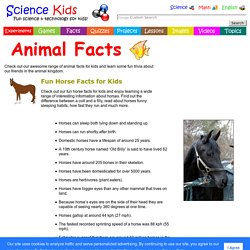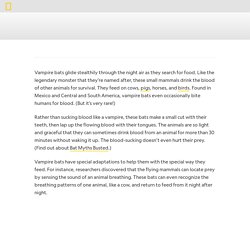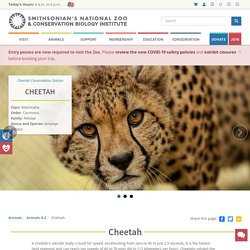

Eagle - 2. Eagle - 1. Horses - 2. Horse - 1. Horses can sleep both lying down and standing up.

Horses can run shortly after birth. Domestic horses have a lifespan of around 25 years. A 19th century horse named ‘Old Billy’ is said to have lived 62 years. Cardinal - 2. Cardinal - 1. Polar Bear - 2. Polar Bear - 1. Addressing climate change WWF has a dedicated worldwide team working on issues of climate and energy, working regionally, nationally, and internationally.

We support research on climate change effects, and show the way forward by funding research and analysis on alternative energy.We advocate for governments to recognize and mitigate the effects of climate change on polar bears.WWF has successfully pushed for a statement by countries with polar bear populations, formally recognizing the urgent need for an effective global response to address the challenges of climate change.WWF has successfully advocated for the creation of a circumpolar polar bear management plan. At meetings with governments whose countries are in the polar bear range, WWF has successfully pushed for a statement formally recognizing the urgent need for an effective global response that will address the challenges of climate change.
Reducing conflict Monitoring populations. Bats - 2. Bats can be found almost anywhere, except in polar regions and extreme deserts.

They usually rest in large social groups in caves, trees, and man-made structures such as bridges, but some species shelter in animal burrows, termite nests, or even in flowers or giant spiderwebs. Some bats migrate to warmer climates during the winter, while others hibernate. One species travels 2,400 miles (3,900 kilometers) each year! It is not yet known how bats navigate these long distances to find the same cave they used the year before. Bats roost upside down, since the lightweight bones in their hind legs cannot support their body weight in an upright position. Bat - 1. Vampire bats glide stealthily through the night air as they search for food.

Like the legendary monster that they’re named after, these small mammals drink the blood of other animals for survival. They feed on cows, pigs, horses, and birds. Found in Mexico and Central and South America, vampire bats even occasionally bite humans for blood. Lion - 2. Lions are the second-largest cats in the world, after tigers.

Known as the "king of beasts" or "king of the jungle," these regal felines once roamed Africa, Asia and Europe, but now only live in parts of Africa and India. Experts have long recognized two subspecies of lion, Panthera leo leo (the African lion) and Panthera leo persica (the Asiatic lion). However, recent studies suggest that lions from West and Central Africa are more closely related to Asian lions than they are to lions from the eastern and southern parts of Africa, according to the Cat Specialist Group, a component of the International Union for Conservation of Nature (IUCN). Lion - 1. African lions Panthera leo Type: Mammals Diet: Carnivore Size: Head and body, 4.5 to 6.5 feet; tail, 26.25 to 39.5 inches.

Cheetah - 2. Cheetahs have slender, long-legged bodies with blunt, semi-retractable claws.

Their heads are small with high-set eyes. A black tear mark runs from the inner corner of each eye down to the mouth. A cheetah's teeth are small when compared with other big cats, which accommodates their larger nasal passages that enable quick air intake. Adults have yellow or tan short, coarse fur with solid black round or oval spots measuring 0.75 to 1.5 inches (1.9 to 3.8 centimeters) in diameter. The spots cover nearly the entire body; only the white throat and belly are unmarked. Cheetah - 1. Octopus - 2. Common Octopus.

Octopus - 1. Octopuses are ocean creatures that are most famous for having eight arms and bulbous heads.

Some other fun facts: They have three hearts and blue blood; they squirt ink to deter predators; and being boneless, they can squeeze into (or out of) tight spaces. They are quite intelligent and have been observed using tools. Rabbit - 2. Rabbit - 1. Cute, fuzzy, fluffy and hopping mad, who doesn’t love these adorable creatures, also known as bunnies?

Check out our top ten rabbit facts! 1) A baby rabbit is called a kit, a female is called a doe and a male is called a buck. 2) Rabbits are very social creatures that live in groups. They live in warrens — a series of tunnels and rooms that they dig underground. 3) A rabbit’s teeth never stop growing! Bengal Tiger - 1. Bengal Tiger - 2. The Bengal tiger, also known as the Royal Bengal Tiger or the Indian tiger, is the subspecies with the largest population. It is the national animal of India, place where its image is part of the traditions and the culture. In Bangladesh, it is also the national animal present even in the bills. Order: Carnivora Family: Felidae Genre: Panthera Species: Panthera tigris Subspecies: Panthera tigris tigris The morphology of the Bengal tiger is beautiful and imposing. Megalodon - 2. The megalodon, which went extinct millions of years ago, was the largest shark ever to prowl the oceans and one of the largest fish on record.
The scientific name, Carcharocles megalodon, means "giant tooth," and for good reason: Its massive teeth are almost three times larger than the teeth of a modern great white shark. The megalodon's fossilized bones and teeth give scientists major clues about what the creature was like and when it died off. When the megalodon went extinct While the popular 2018 movie, "The Meg," pits modern humans against an enormous megalodon, it's actually more than likely that the beast died out before humans even evolved. But it's difficult to pinpoint the exact date that the megalodon went extinct because the fossil record is incomplete.
In 2014, a research group at the University of Zurich studied megalodon fossils using a technique called optimal linear estimation to determine their age. How big were megalodons? Where did megalodons live? Megalodon - 1.